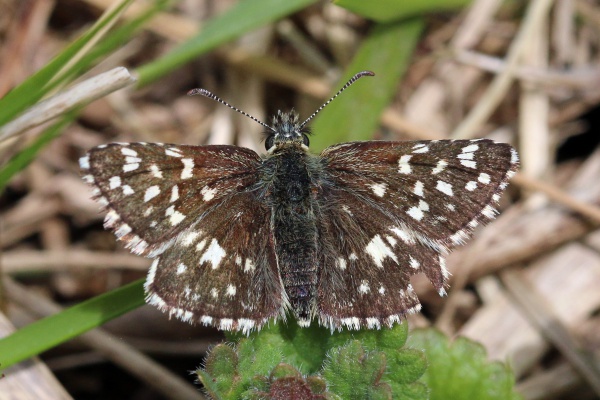Facts About Grizzled skipper
The grizzled skipper, a charming butterfly from the Hesperiidae family, is easily recognized by its distinctive black-and-white checkered wings. You can spot this butterfly across Europe, particularly in central and southern England, where it thrives in woodlands, grasslands, and even industrial areas.
This butterfly is part of the Pyrgus malvae superspecies, which includes three subspecies: Pyrgus malvae malvae, Pyrgus malvae malvoides, and Pyrgus malvae melotis. Grizzled skippers lay their eggs on plants such as Agrimony. After hatching, the larvae do not wander far, eventually spinning cocoons in the spring. As adults, these butterflies are diurnal fliers, often seen feeding on blue or violet flowers. They communicate through vibrations and chemical signals, particularly during mating.
Geographically, Pyrgus malvae can be found not just in Western Europe but also in parts of Greece, the Mediterranean Islands, Korea, and Germany. They favor warmer, drier climates and exhibit territorial behaviors when it comes to mating, employing strategies like perching and patrolling.
Female grizzled skippers are selective about where they lay their eggs, choosing host plants based on size, nutritional value, and microclimate. The larvae feed on plants such as agrimony, creeping cinquefoil, and wild strawberry, often creating small tents from the leaves. Predators like ants pose a threat to these larvae, but they have developed vibrational communication to help fend them off, similar to Lycaenidae butterflies.
Unfortunately, grizzled skippers are experiencing population declines in several European countries, prompting conservation efforts. Some regions are considering grazing as a conservation method to help maintain their habitats.
The butterfly’s life cycle is a fascinating journey from egg-laying and larval development to pupation and adult emergence. Climate change is influencing their distribution, with warmer climates proving more favorable. Their wing structure aids in their flight, and their mating behaviors involve intricate chemical communication and territorial tactics.
Despite the challenges they face, protecting the grizzled skipper and its habitat is crucial. With concerted conservation efforts, we can ensure that future generations will continue to enjoy the sight of these delightful butterflies.

 Ireland
Ireland